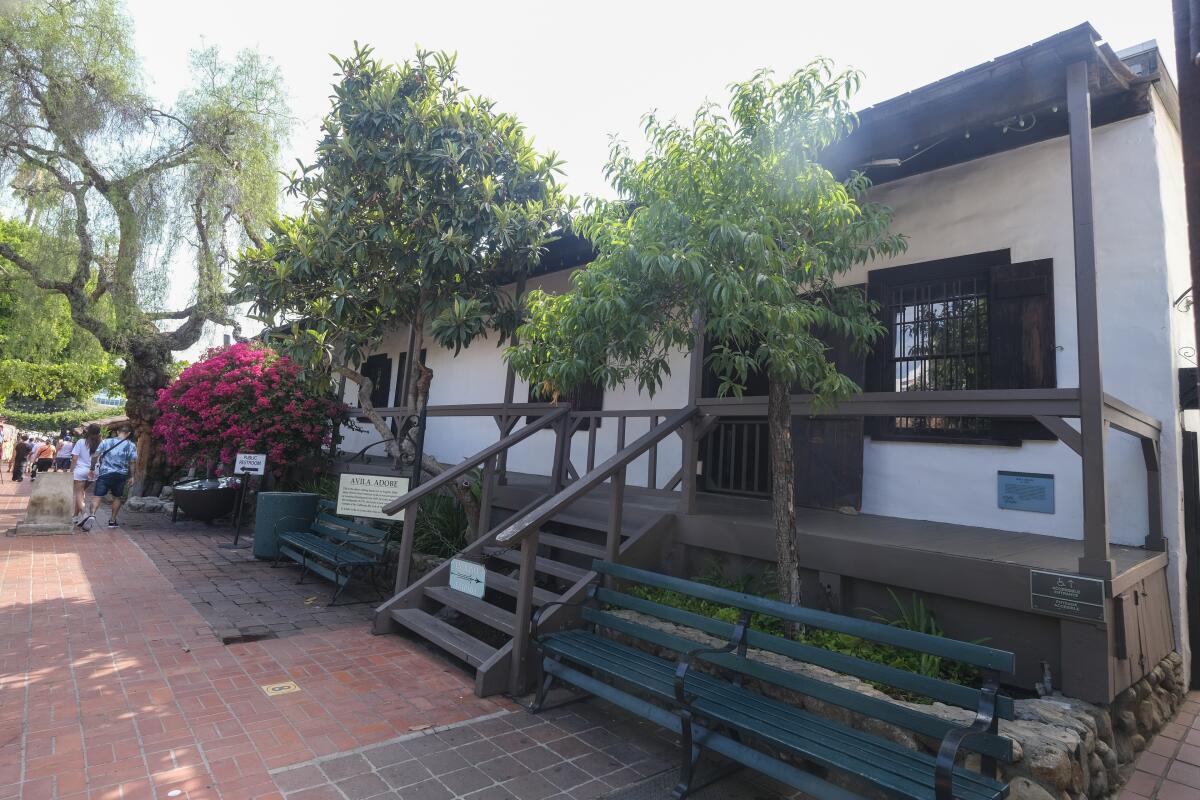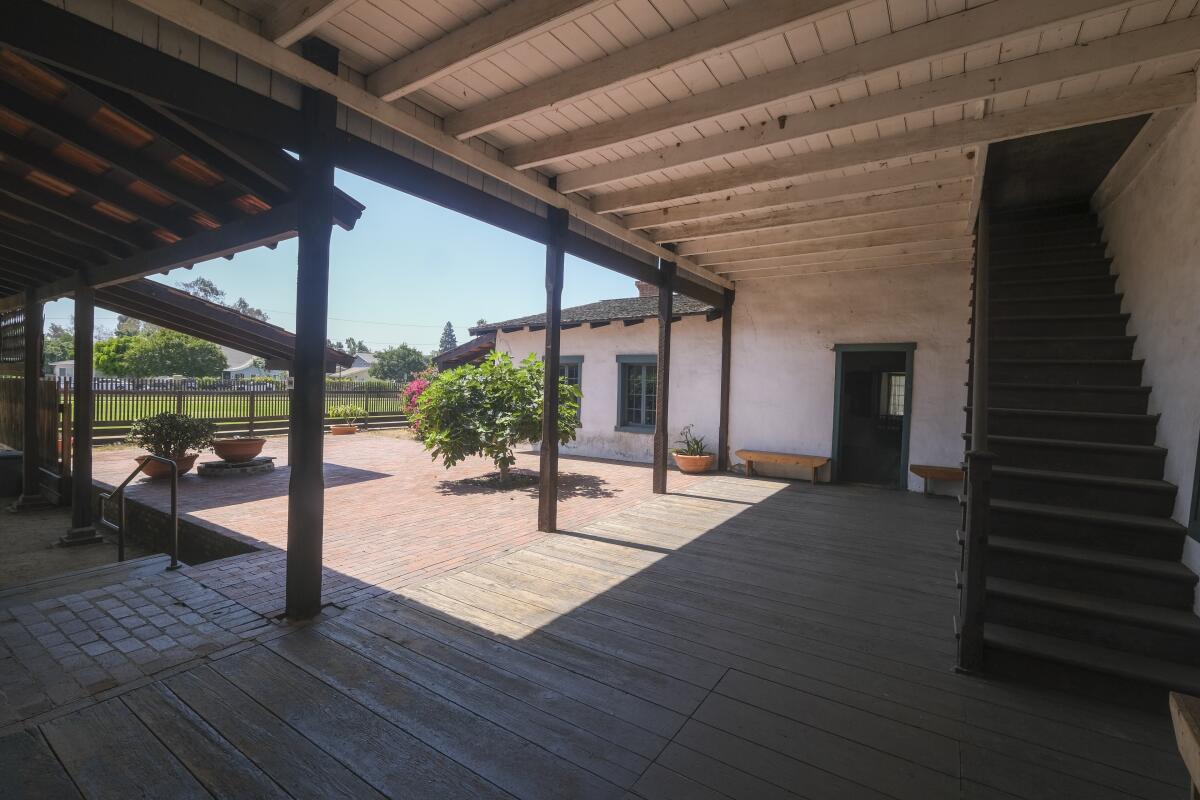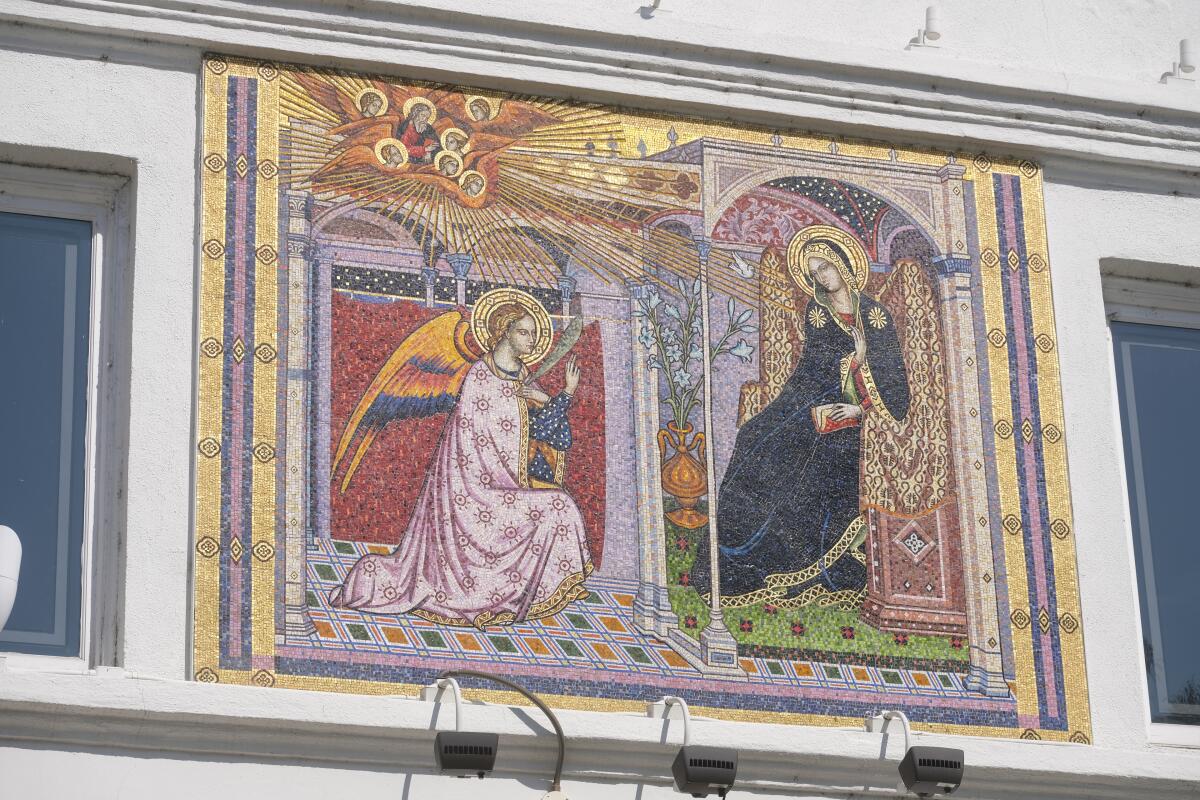The history of Los Angeles is complicated, and there’s no better example of this than Olvera Street. Located downtown in the L.A. Plaza Historic District, the popular marketplace is lined with Mexican restaurants, stores and kiosks selling everything from T-shirts to pottery to statues of the Virgin of Guadalupe.
For decades, many have believed that Olvera Street was the historic Mexican center of Los Angeles. In reality, it was created in 1930 by Northern California transplant Christine Sterling, who fell in love with a romanticized Old Mexico filled with strolling guitar players in sombreros and women in colorful peasant dresses.

The Ávila Adobe on Olvera Street is one of the oldest houses in Los Angeles. Today, it’s a popular museum.
(Ringo Chiu / For De Los)
The city’s first Mexican immigrants came to L.A. from the states of Sinaloa and Sonora in Mexico during the Gold Rush and settled in an area that became known as Sonora Town. It wasn’t located on Olvera Street but several blocks away, in what is now Chinatown.
What happened to Sonora Town? Like so many Latino neighborhoods, transportation and rising real estate prices pushed residents to other parts of L.A. when the Southern Pacific Railroad put its depot nearby.
Historic monuments all over the city and county tell a story of Los Angeles from the people who settled here, not necessarily those who existed here until their land was taken away.

Pío Pico State Historic Park in Whittier offers more perspective to the life of Alta California’s last governor, who was of Spanish, African and Indigenous Mexican descent.
(Ringo Chiu / For De Los)
We can’t forget that California belonged to Mexico until it became a state in 1850 after the Mexican-American War. For centuries before that, California was home to hundreds of thousands of Indigenous people until the Spanish arrived in 1769 and wiped out many of them through violence, enslavement and disease. The Indigenous communities that survived faced another horrific challenge when in 1851, California’s first governor, Peter Hardeman Burnett, declared war against them “… until the Indian race becomes extinct …” resulting in more than 100,000 more deaths.

Artwork on the wall at La Placita (La Iglesia de Nuestra Señora la Reina de Los Ángeles), which was almost demolished after the Northridge earthquake but was renovated to its former glory and is now a restaurant and event space.
(Ringo Chiu / For De Los)
There’s so much hidden history to be found. So where can you go in Los Angeles to uncover these stories? Here are 10 places to learn or think about L.A.’s Mexican history.

